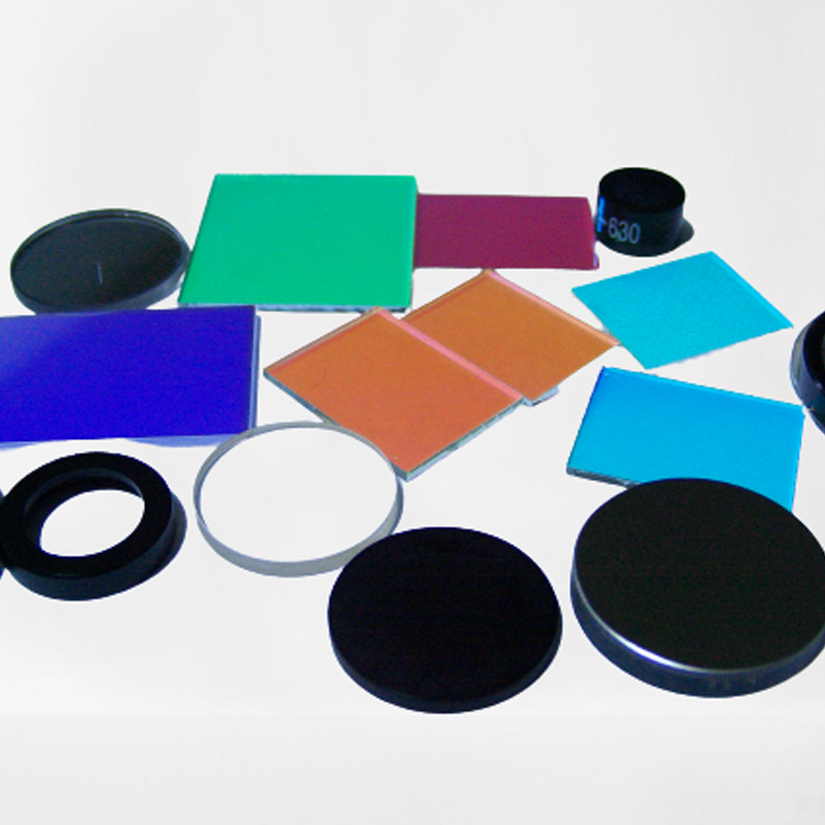
Although there are many types of filters, they all have the same basic function - transmitting light in a specific wavelength or range of colors, while preventing the remaining wavelengths from passing through.
Optical filters types fall into two broad categories: absorption filters and dichroic filters (also known as interference filters).
1. Absorptive optical filter
Often made of glass to which selected organic or inorganic compounds have been added. These added compounds act to absorb (essentially block) certain wavelengths while transmitting others.
2. Dichroic optical filter
Almost the exact opposite of absorptive filters, they reflect selected wavelengths instead of absorbing them and then transmit the rest.
Both types of optical filters have many functions, but dichroic filters get most of their properties from the optical coating - depending on the thickness and properties of the filter coating, precise wavelengths can be reflected or transmitted scope.
This makes dichroic filters especially effective in scientific fields. The camera also utilizes dichroic filters to separate light wavelengths according to film specifications.
3. Monochromatic optical filter
Monochromatic filters transmit only one color (narrow wavelengths).
4. Infrared optical filter and UV optical filter
This type of heat-absorbing filter transmits visible light but blocks the mid-infrared spectrum. Incandescent bulbs depend on IR filters.
A UV filter effectively blocks the UV range of the spectrum, it transmits visible light like an IR filter.
This type of filter is often used in cameras because film is sensitive to UV light, whereas the human eye is not, and in order to capture an image on film as the eye perceives, all UV wavelengths must be filtered out.
5. Neutral density optical filters
Neutral density filters reduce the intensity of light at all wavelengths by filtering out only a portion of each wavelength. The optical density of the filter is combined with some logarithm to determine exactly how much of each wavelength to block. .
This type of filter is useful in photography because filters allow users to accurately capture images even in bright light, and neutral density filters can be absorbing or reflective.
6. Long-pass and short-pass optical filter
This type of filter is usually made of tinted glass and transmits longer wavelengths of the spectrum, such as infrared, ultraviolet, and visible light.
Longpass filters block shorter wavelengths and are often used as emission filters in fluorescence microscopy, and are a key component of dichroic (unidirectional) mirrors.
Short-pass filters serve as the opposite function of long-pass filters: they emit short wavelengths instead of long, they are tinted glass filters, and long-pass filters can only have the opposite result and effect for the same application.
7. Band pass filter optics
When longpass and shortpass filters are combined the resulting device is a band pass filter optics, although band pass filter optics transmit less light than shortpass and longpass filters, the filter can be controlled to transmit a wide or narrow range of light.
8. Polarizing optical filter
Polarizing filters block or transmit light depending on the polarization of the filter, reflections (such as water or shiny surfaces) are highly polar - polarizing filters block some of the spectrum that causes reflections, resulting in more good visibility.
Polarizing filters can darken bright components in color photography, such as the sky, because of the high UV intensity in the sky, and they can also help manage reflections by minimizing the appearance in the final image.
